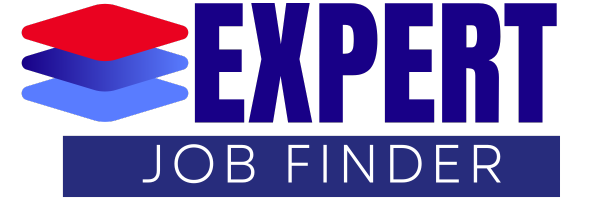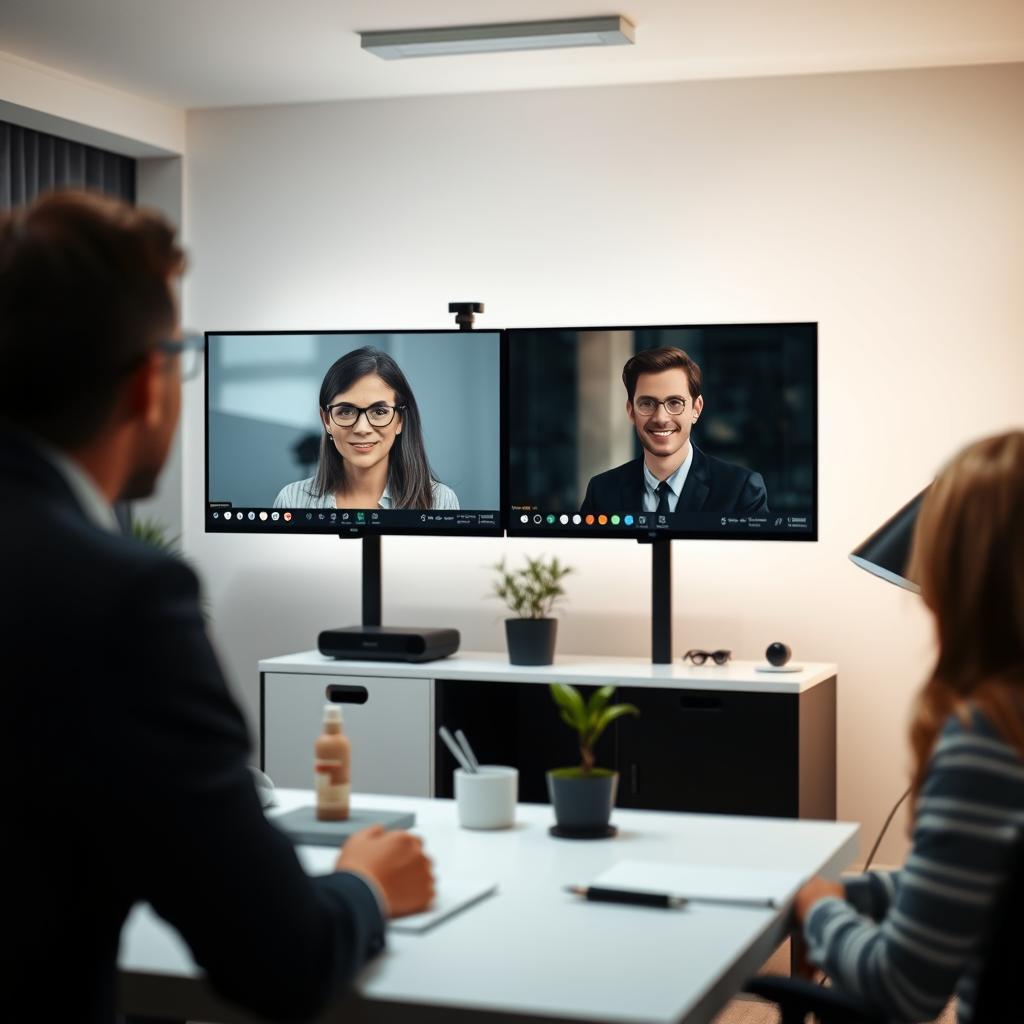An online interview is a job assessment done via video calls or special platforms like Zoom. Employers use these interviews at all stages, from the first round to the final. It’s crucial for job seekers in Australia to understand how they work.
This guide will help you ace an online job interview. You’ll learn how to prepare your space and tech, improve your on-camera look, and craft answers. It also covers how to deal with interruptions and follow up. Plus, it talks about making sure everyone can join in and avoiding common mistakes.
In fields like professional services, healthcare, trades, and retail, video interviews are becoming more common. They help save time and reach more candidates. Whether you’re starting your career, changing jobs, or coming back to work, these tips will help you feel confident and reduce tech issues.
This article aims to give you clear, step-by-step advice. It’s designed to boost your confidence, avoid mistakes, and increase your chances of moving forward after a virtual interview.
Why online interviews matter in the Australian job market
The Australian job market has changed a lot since COVID-19. Companies like Telstra and Commonwealth Bank started using online interviews. This change made remote interviews common and led to the use of tools like Microsoft Teams and Zoom.
Online interviews are good for everyone. Employers save money and time, and can find talent from anywhere. Candidates also save time and money, and can apply for jobs in different parts of Australia.
Video or phone interviews help make assessments fair. HR teams use set questions and recorded answers. This way, hiring managers can compare candidates easily, but also look at how they present themselves online.
Online interviews can be fast, but they can also be unfair. Some people might not have good internet or know how to use the platforms. Employers try to make things fair by giving tips or making adjustments.
So, what should candidates do? They should prepare for online interviews just like they would for in-person ones. Make sure your internet is good, your lighting is right, and you can communicate clearly online.
“Organisations that combine structured questions, impartial scoring and digital assessment tools tend to make faster, more defensible hiring choices.”
Using these methods can make hiring better for everyone. Fair online interviews help employers find the best people, no matter where they are. And it gives people in regional areas a chance to apply for jobs they couldn’t reach before.
Preparing your environment for a professional video interview
Getting your space ready boosts confidence and makes a strong impression in online interviews. Small changes in lighting, background, and routines can make your virtual interview calm and controlled. Use this checklist to set up a workspace for clear audio, steady video, and minimal distractions.
Find a quiet, well-lit spot that reduces noise and highlights your face. Rooms with south- or east-facing windows offer soft morning or afternoon light. Place a window or lamp in front of you to avoid backlighting. Adjust your camera view until your face is evenly lit.
Keep backgrounds simple and tidy for a professional look. A plain wall, a neat bookshelf, or a small home office works well. Remove laundry, personal photos, and clutter that could distract the interviewer. If using a virtual background, test it before the call and choose a subtle, neutral image.
Reduce interruptions by planning with household members and securing pets in another room. Silence phones, close other browser tabs, and put a “Do not disturb” sign on the door if needed. Have water and tissues nearby and keep printed notes or a notepad just out of camera view for quick reference.
If you’re in shared or temporary accommodation, find alternative quiet spaces like a local library or co-working hub. Book a private room in advance when possible and check opening hours. Having these plans ready ensures you can attend your video interview without stress.
- Pick soft, front-facing light and test camera angles.
- Choose uncluttered backgrounds or test virtual options.
- Plan with household members and secure pets.
- Keep essentials nearby and notes out of sight for an online interview.
Essential tech checklist for a smooth virtual interview
Before your web-based interview, do a quick tech check. This ensures your tech doesn’t interrupt your answers. A short practice session can also help reduce your stress levels. Here are some practical steps to help your online interview go smoothly.
-
Internet connection and backup plans
Use a wired Ethernet connection for the best stability. If Wi-Fi is your only option, sit near the router and close apps that use a lot of bandwidth. You’ll need at least 5–10 Mbps upload speed for HD video.
Have a backup plan, like a mobile hotspot with enough data. Test it before the interview. If you plan to switch to mobile, let the interviewer know at the start.
-
Camera, microphone and audio optimisation
Use a dedicated webcam if your laptop camera isn’t good enough. Place the camera at eye level to avoid bad angles. Make sure your head and shoulders are in frame in the meeting app preview.
For better sound, use a headset or external microphone. Test your mic levels and mute it when not speaking. Turn off noisy appliances and disable keyboard sounds.
-
Familiarity with video conferencing platforms
Download the apps you need and create accounts early. Try out trial calls on Zoom, Microsoft Teams, and Google Meet. This will help you get used to their features.
Practice using the mute and unmute functions, screen sharing, and chat. Test sharing files like PDFs or PowerPoint presentations. Learn how to rename yourself in the meeting and how to join by phone if needed.
Mastering on-camera presence for video interview success
Being confident on camera can really boost your video interview performance. Making a few tweaks to how you frame yourself, speak, and dress can make you appear more professional and confident. This is true for any online meeting or virtual interview.
Make sure your head and shoulders are in view, with a small gap above your head. Sit back a bit on a stable chair. Always look at the camera lens to make eye contact. Only glance at your notes when it’s absolutely necessary.
Keep your posture open and relaxed. Let your hands move naturally within the camera frame. This shows you’re engaged and interested in the conversation.
Speak at a steady, slightly slower pace than usual. This helps with audio delays. Break your points into short sentences and pause briefly for the interviewer to respond. If you notice a delay, say “I’ll pause for a moment” before continuing.
Wear clothes that are one level more formal than the role requires. Business casual is a good choice for most Australian workplaces. Steer clear of busy patterns and bright whites that can be too harsh on camera. Opt for solid, muted colours that complement your skin tone and the lighting of the platform.
Don’t underestimate the importance of grooming. Keep your hair and facial hair tidy, and wear minimal reflective jewellery. A quick camera check can also help avoid distractions. For recorded interviews, wear the same outfit as you would for a live session to maintain consistency and credibility.
- Framing: head and shoulders visible, small headroom
- Eye contact: look at camera, not screen
- Body language: sit up straight, use natural gestures
- Speech: clear, paced, with intentional pauses
- Wardrobe: solid colours, neat grooming
Online interview — how to prepare your answers and examples
Getting ready for an online interview means having a plan and practicing. Use clear examples that show your skills, not just long summaries. Keep your answers short so your main points get across well in a virtual or remote interview.
Start with a solid framework for your answers. Practice short, measurable stories that recruiters can follow easily in an online job interview.
-
Using the STAR method for competency questions
-
Situation: set the scene in one or two sentences.
-
Task: explain your responsibility or the goal.
-
Action: describe steps you took, focusing on your contribution.
-
Result: quantify outcomes where possible, for example “reduced processing time by 20%”.
-
-
Prepare 6–8 compact STAR examples that cover teamwork, problem-solving, leadership, conflict resolution and adaptability.
-
Keep each example to about 45–90 seconds so answers remain crisp on a virtual interview platform.
Make each example fit the role and employer. Read the job description carefully and check the company website and LinkedIn posts. This helps you understand their culture and priorities.
-
Tailoring responses to role requirements and company culture
Match your STAR stories to key selection criteria. For safety-sensitive roles mention compliance with Australian standards. For healthcare roles note privacy and patient-centred practice. Show how your actions support the organisation’s mission and add value from day one.
-
Use language from the job ad when it fits. That helps hiring managers in a remote interview see clear alignment with the role.
Prepare thoughtful questions to show your interest and to see if the job is right for you. Good questions help you judge team fit during an online job interview.
-
Preparing questions to ask the interviewer
-
What are the top priorities for this role in the first three months?
-
How is success measured for this position and what tools are used?
-
Can you describe the team structure and reporting lines?
-
What does onboarding look like and what learning support is available?
-
Is there flexibility around location or hours for remote interview hires?
-
-
Avoid asking about salary early unless the interviewer brings it up. If pay comes up, cite market data from Seek or LinkedIn when discussing expectations for Australian roles.
Rehearse answers aloud and record quick practice runs to check timing and clarity. Short, polished responses help you stand out in any online interview setting.
Practising and rehearsing for greater confidence
Rehearsal turns nerves into polish. Spend time running through answers, body language, and technical checks. This ensures you present clearly in a video interview. Recording practice runs helps you spot habits that distract from your message.
Mock interviews create a low-stakes space to improve. Use the employer’s chosen platform when possible or record via smartphone or Zoom. Watch recordings for posture, speech rate, facial expressions, and filler words.
- Check framing, lighting, and background in each recording.
- Note moments when you look away or fidget and correct them.
- Repeat short segments until delivery feels natural.
Invite peers, mentors, or career advisers to a practice session. SEEK Career Advice and university career centres offer structured support if you need professional coaching. Ask for specific, actionable feedback on answers and presence.
- Request comments on tone, clarity, and eye contact.
- Compare self-recordings with feedback to track progress.
- Run a full dress rehearsal to test wardrobe and audio.
Timing answers makes your points memorable. Aim for crisp competency responses around 60–90 seconds unless further detail is needed. Refine a 30-second pitch that summarises your background and value.
- Draft 3–4 key messages you want every interviewer to remember.
- Weave those messages naturally into answers during practice.
- Use a mock online meeting to rehearse transitions between questions.
Repeat short, focused practices rather than long sessions. Small, frequent rehearsals boost confidence for any virtual interview or online interview you face in the Australian job market.
Managing nerves and technical glitches during a digital interview
Getting ready helps calm your nerves before an online interview. Try to get there 10–15 minutes early. This time is for sound and camera checks and to get your thoughts together.
Use breathing and grounding exercises to stay calm. Try box breathing: inhale for 4 seconds, hold for 4, exhale for 4, hold for 4. Repeat a few cycles. If your mind wanders, name three objects in the room to bring focus back to the moment.
Have a short script ready if technology fails during video conferencing. Rejoin the meeting immediately. If reconnection fails, send a brief message by email or chat explaining the issue and offer a phone backup number. If the outage lasts, propose alternative times for rescheduling and list your availability.
Keep recruiter contact details handy. A quick, calm note such as “I’m reconnecting now; if this persists I can take a call on [phone number]” shows professionalism and keeps the process moving.
Handle interruptions gracefully when someone or a pet appears on camera. Apologise briefly, mute your audio and resolve the situation. If it can’t be fixed quickly, consider turning off video and continuing on audio while you manage the disruption.
Light humour may ease the moment, but use it sparingly and stay focused on the questions. Clear, steady responses during a digital interview build confidence and leave a strong impression despite minor hiccups.
- Arrive early for checks and calm time.
- Use box breathing and grounding to steady nerves.
- Have a reconnection script for video conferencing failures.
- Offer a phone backup and reschedule windows if needed.
- Mute, apologise briefly, then resolve interruptions with composure.
Following up after a remote interview for better outcomes
After a virtual interview, a quick follow-up can leave a lasting impression. Keep your messages brief and polite. Highlight one key strength or example that shows you’re a good fit for the role.
Crafting a concise, professional thank-you message
Send an email within 24 hours to thank the interviewers. Show your interest in the job and mention a key qualification that matches the role.
Keep it short: one to three paragraphs are best. Avoid long stories. Use clear language and Australian spelling.
Timing and content for follow-up communication
If no timeline was given, wait five to seven business days for a polite follow-up. Mention the interview date and say you’re still interested.
Offer any extra information they might need, like work samples or more details on your experience. Use LinkedIn to connect only if the interaction was positive. Personalise your request.
Next steps and keeping momentum in the hiring process
If asked for references, send them quickly with contact details and context. When invited to a second stage, confirm the details and prepare what you need.
Keep track of interview dates and conversations for future follow-ups. Keep applying to other jobs while waiting. This keeps your job search momentum going.
Accessibility and inclusivity considerations for web-based interviews
Good planning makes sure everyone can join a virtual interview. Employers in Australia must follow the Disability Discrimination Act. This ensures fair access and builds trust.
Ask for adjustments early. Suggest things like extra time, live captions, or sign language interpreters. Clear requests help teams get ready without stress.
Check if the platform works well before the interview. Services like Zoom, Microsoft Teams, and Google Meet have features for accessibility. Try them out to find the best for you.
- Zoom: enable Closed Captions or use third‑party captioning services.
- Microsoft Teams: turn on Live Captions and transcription in meeting settings.
- Google Meet: switch on Captions and check browser accessibility support.
Talk to recruiters clearly about what you need. Say something like: “I need live captions for the interview; are captions available on your platform?”
Give a few options and confirm the details. Mention your preferred tools and setup needs. Keep a record of agreed adjustments and follow up in writing.
“Clear requests and a tested setup make a web-based interview fair and efficient for everyone.”
Be collaborative when talking about needs. This helps employers see accessibility as part of good hiring. Proper planning benefits both candidates and hiring teams in virtual interviews.
Common pitfalls in video conferencing and how to avoid them
Poor audio or video quality is a big problem in video interviews. Do a tech check before you start. Use a wired connection or a mobile hotspot if Wi-Fi is shaky. A good headset with a clear microphone helps avoid echo and ensures your voice is heard well.
Distracting backgrounds and bad lighting can make a bad impression. Pick a simple background and check your lighting. Make sure the camera is at eye level. Don’t count on virtual backgrounds unless you’ve tested them first.
Looking at the screen instead of the camera and talking over others are common mistakes. Use a marker to remember to look at the camera. Pause before you speak to show you’re ready. This helps avoid interrupting others in an online interview.
Don’t multitask and wear the right clothes for your interview. Test all the platform’s features before the meeting. Turn off notifications and close apps you don’t need. Have phrases ready for awkward moments. Treat a video interview as seriously as you would an in-person one to get better results.


